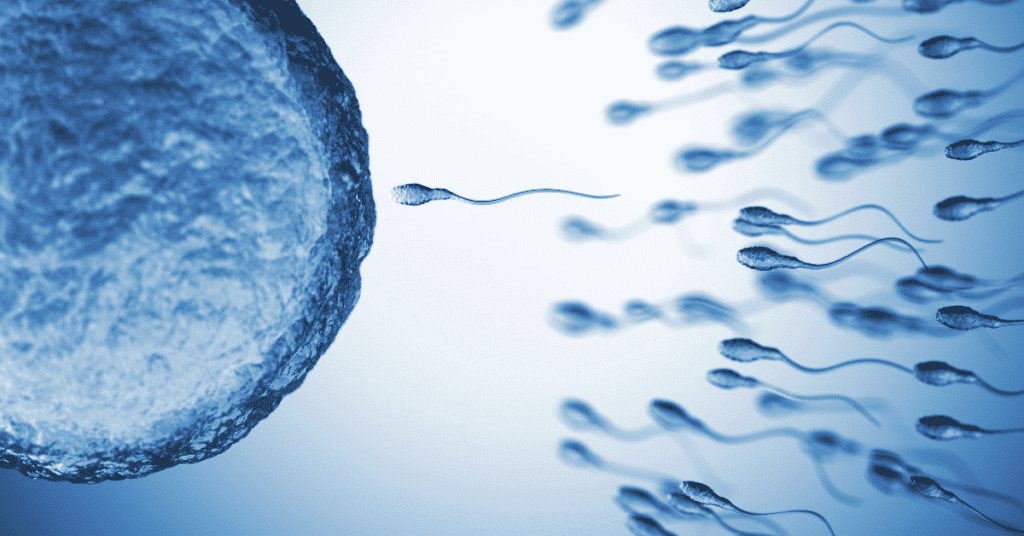
Unexplained infertility is a frustrating diagnosis for couples who are trying to conceive. It refers to the inability to conceive despite normal reproductive function and no identifiable cause of infertility. In contrast, unexplained subfertility is a term used when couples have difficulty conceiving but do not meet the criteria for infertility.
Infertility factors can be subtle and difficult to identify, making unexplained infertility a challenging diagnosis for primary infertile couples and subfertile couples. A thorough evaluation of reproductive and obstetrical history is crucial during a woman’s first visit to determine potential fertility issues that may hinder ongoing pregnancies. Female age is a significant factor in unexplained infertility, as it affects the quality and quantity of eggs available for fertilization.
Despite being classified as primary infertile, couples with unexplained infertility and poor egg quality have been known to achieve spontaneous pregnancy and live birth, as reported in the journal Human Reproduction after univariate analysis revealed missing factors. In addition, ongoing pregnancies can also be achieved through oocyte donation and frozen embryo transfer.
What causes unexplained infertility? The truth is, we don’t know exactly. There are several reasons why some couples may experience this type of fertility issue. One possible explanation could be subtle abnormalities in egg or sperm quality that are not detectable through routine testing methods. Another possibility could be problems with implantation or early embryo development that cannot be identified through standard diagnostic tests.
There is no clear consensus on how common it really is. Some studies estimate that up to 30% of all cases of infertility fall into this category, while others suggest that the true percentage may be much lower.
So can unexplained infertility go away? Again, there’s no straightforward answer here. Some couples may find that their fertility issues resolve on their own over time without any medical intervention. Others may need more aggressive treatments like IVF or IUI in order to increase their chances of conception.
Controversy Surrounding Unexplained Infertility Diagnosis and Treatment
The diagnosis of unexplained infertility can be a frustrating experience for couples trying to conceive. It is defined as the inability to conceive after 12 months of unprotected intercourse, with no clear reason found in either partner. The lack of a clear cause for infertility makes it difficult for doctors to provide effective treatment options, leading to controversy surrounding the diagnosis and treatment.
Treatment Options for Unexplained Infertility
Clinics may offer treatments such as intrauterine insemination (IUI) or in vitro fertilization (IVF) for unexplained infertility, but success rates vary and may not always result in pregnancies. Analysis of treatment options for unexplained infertility has shown that there is no significant difference in success rates between IUI and IVF. This can make it difficult for patients who are unsure which treatment option will work best for them.

Cycles of Treatment
Patients with unexplained infertility may undergo multiple cycles of treatment without success, leading to frustration and emotional strain. The cost of fertility treatments can also add up quickly, making it financially challenging for some couples. It is important that patients have access to counseling services during this time to help manage the emotional toll that unsuccessful treatments can take on them.
Cat Positive Correlation
Some studies have suggested that a positive cat allergy test (cat positive) may be a factor in unexplained infertility, but more research is needed to confirm this correlation. While this correlation does not provide a definitive answer to the cause of unexplained infertility, it does highlight the need for continued research into potential causes beyond traditional testing methods.
Understanding the Success Rates of Unexplained Infertility Treatments
Success Rates of Unexplained Infertility Treatments
When couples struggle to conceive, doctors will often diagnose them with unexplained infertility. This means that despite thorough testing, the cause of their infertility remains unknown. The good news is that there are treatments available to help these couples conceive. However, the success rates of these treatments vary depending on the type of treatment.

Pregnancy Rates for Unexplained Infertility Treatments
The pregnancy rates for unexplained infertility treatments range from 10% to 40%. Intrauterine insemination (IUI) has a success rate of around 10% per cycle, while in vitro fertilization (IVF) has a success rate of around 30% per cycle. It’s important to note that these rates can vary based on factors such as age and duration of infertility.
Importance of Standard Infertility Testing
Identifying the root cause of infertility can be a challenging and emotional journey for many couples. Standard infertility testing is a crucial step in this process, as it can help identify any underlying medical conditions or issues that may be hindering conception. In this section, we will discuss the importance of standard infertility testing and how it can improve fertility success rates.
Semen Analysis: Evaluating Sperm Quantity and Quality
One common test that is often included in standard infertility testing is semen analysis. This test evaluates the quantity and quality of sperm present in a man’s semen, which can have a significant impact on fertility. A low sperm count or poor sperm motility may make it more difficult for sperm to reach and fertilize an egg, reducing the chances of conception.

Other Tests: Identifying Hormonal Imbalances and Structural Issues
In addition to semen analysis, there are several other tests that may be performed during standard infertility testing. Blood tests can help identify hormonal imbalances that may be affecting fertility, such as thyroid disorders or polycystic ovary syndrome (PCOS). Ultrasounds may also be used to detect structural issues within the reproductive system, such as blocked fallopian tubes or uterine abnormalities.
Identifying Underlying Medical Conditions
Identifying any underlying medical conditions through standard infertility testing can also improve fertility success rates. For example, treating thyroid disorders with medication or making lifestyle changes to manage PCOS symptoms can increase the likelihood of conception. In some cases, identifying these conditions early on may even allow couples to conceive naturally without requiring assisted reproductive technologies (ART) such as in vitro fertilization (IVF).
The Risks of Skipping Standard Infertility Testing
Skipping standard infertility testing can lead to misdiagnosis and ineffective treatments, prolonging the journey to parenthood. Without proper testing, couples may pursue treatments that are not addressing the root cause of their infertility. This not only wastes time and money but can also take a toll on emotional well-being.
Injectable Gonadotropins Plus Intercourse for Unexplained Infertility
Couples who have been trying to conceive for over a year without success are often diagnosed with unexplained infertility. This means that there is no obvious medical reason why they are unable to conceive. However, there are still treatment options available that can increase the chances of pregnancy. One such option is injectable gonadotropins combined with unprotected intercourse.
Ovarian Stimulation with Gonadotropins
Gonadotropins are hormones that stimulate the ovaries to produce eggs. Injectable gonadotropins can be used to increase the number of eggs produced, improving the chances of fertilization and pregnancy. This treatment is typically combined with regular ultrasounds and blood tests to monitor follicle development and hormone levels.
Intracytoplasmic Sperm Injection (ICSI)
If there are issues with male fertility, intracytoplasmic sperm injection (ICSI) may be recommended in conjunction with ovarian stimulation. ICSI involves injecting a single sperm directly into an egg to increase the chances of fertilization. This procedure can be particularly effective when there are issues with sperm motility or morphology.
Insemination
Another option for couples with unexplained infertility is insemination, also known as intrauterine insemination (IUI). In this procedure, motile sperm are placed directly into the female partner’s uterus to improve the chances of fertilization. This can be done using fresh or frozen sperm from either the male partner or a donor.

Success Rates
Studies have shown that combining injectable gonadotropins with unprotected intercourse can significantly increase pregnancy rates in couples with unexplained infertility. In one study published in Fertility and Sterility, 40% of couples achieved pregnancy after three cycles of ovarian stimulation and intercourse compared to just 7% who were not treated.
It is important to note that success rates can vary depending on a variety of factors, including female age, male fertility, and the health of the fallopian tubes. Before beginning any treatment for unexplained infertility, it is important to undergo thorough testing to identify any underlying issues that may be contributing to infertility.
Clomid Plus Insemination and IUI for Unexplained Infertility
Clomid, also known as clomiphene citrate, is a medication that stimulates ovulation in female patients with unexplained infertility. Intrauterine insemination (IUI) is a fertility treatment that involves placing washed sperm directly into the uterus during ovulation. Combining Clomid with IUI can increase the chances of pregnancy for couples with missing fertility prognosis. The use of Clomid with IUI may lead to a higher chance of becoming pg for couples with unexplained infertility.
Studies have shown that the success rates of Clomid plus IUI for unexplained infertility range from 8% to 22% per cycle. The success rates of Clomid plus IUI for unexplained infertility may vary depending on factors such as age, duration of infertility, and sperm quality. According to Collins JA, a leading expert in reproductive medicine, Clomid plus IUI is a reasonable first-line treatment option for couples with unexplained infertility.
Clomid works by blocking estrogen receptors in the brain, which stimulates the production of follicle-stimulating hormone (FSH) and luteinizing hormone (LH). These hormones then stimulate the ovaries to produce eggs. In combination with timed intercourse or IUI, this can increase the chances of conception.
IUI involves washing and concentrating sperm before placing it directly into the uterus during ovulation. This procedure bypasses any cervical mucus issues and helps ensure that more sperm reach the egg. When combined with Clomid, which increases the number of eggs produced during each cycle, there are more opportunities for fertilization to occur.
While Clomid plus IUI has been shown to be effective in increasing pregnancy rates among couples with unexplained infertility, it may not work for everyone. Factors such as age and duration of infertility can affect success rates. Male factor infertility may decrease the effectiveness of this treatment.
Evaluating the Effectiveness of IVF Therapy for Unexplained Infertility
IVF Treatment for Unexplained Infertility: A Promising Strategy
IVF treatment is a common strategy used to treat couples with unexplained infertility, and several studies have been conducted to evaluate its effectiveness. These studies have shown that IVF therapy can significantly improve pregnancy rates in couples with unexplained infertility.
Studies Show Positive Results
One study published in the Journal of Assisted Reproduction and Genetics found that IVF treatment resulted in a 42% clinical pregnancy rate among couples with unexplained infertility, compared to just 10% without treatment. Another study published in Human Reproduction Update found that IVF therapy had a live birth rate of 32.2%, while natural conception had a live birth rate of only 3.6%.
Factors That Contribute to Success Rates
Multivariate analysis has been used to determine the value of different factors in predicting the success of IVF treatment for unexplained infertility. Age and duration of infertility are two important factors that can impact the success rates of IVF therapy. For example, one study found that women under the age of 35 who underwent IVF treatment had higher pregnancy rates than those over 35 years old.
Other factors include the quality and quantity of embryos produced during IVF cycles, as well as maternal BMI and smoking status. By identifying these predictive factors, doctors can better tailor their approach to each individual patient’s needs.
Disagreement Among Physicians on the Management of Unexplained Infertility
Physicians have different opinions on how to manage unexplained infertility, leading to disagreement among many clinicians. While some doctors recommend discontinuation of treatment after a certain period of time, others suggest continuing with different approaches. The lack of consensus among physicians can make it difficult for patients to decide on the best course of action.
One reason for the disagreement is that patient characteristics can play a role in the management of unexplained infertility. Some specialists tailor their approach based on individual needs, taking into account factors such as age, medical history, and lifestyle habits. For example, a patient who has been trying to conceive for several years may require more aggressive treatment than someone who has only recently started trying.
Despite the differences in opinion among physicians, patients should be informed about all available options and make decisions based on their own preferences and values. This requires open communication between doctors and patients throughout the treatment process. Patients should feel comfortable asking questions and expressing their concerns so that they can make informed decisions about their care.
Collaborative efforts among physicians and within a group practice can help ensure that patients receive comprehensive and personalized care for unexplained infertility. By working together, doctors can share knowledge and expertise to develop individualized treatment plans that take into account each patient’s unique situation. This type of collaborative approach also allows doctors to monitor progress over time and adjust treatments as needed.
Latest Protocols and Procedures Approved by ESHRE
National Guidelines for Unexplained Infertility Treatment
ESHRE has recently approved the latest protocols and procedures for unexplained infertility treatment based on national guidelines. These guidelines were developed to ensure that patients receive the most effective and safe treatments available, while also minimizing risks associated with infertility treatments. The guidelines are based on extensive research conducted by leading experts in the field of reproductive medicine.

Steures et al Study
One study that received final approval from ESHRE was conducted by Steures et al. This study evaluated the effectiveness of various protocols and procedures used in unexplained infertility treatment. The results showed that certain approaches, such as using cumulative ovarian response (OPRs), had higher success rates than others.
Research on Efficacy of Protocols
ScholarCrossRefSearch, ADS PubMedWorldCat, and other databases provide access to a wealth of research on the efficacy of these protocols. Studies by Eijkemans MJC and Van der Steeg have shown promising results in improving success rates for unexplained infertility. These studies highlight the importance of following national guidelines when developing treatment plans for patients with unexplained infertility.
New Modes of Treatment
In addition to following national guidelines, new modes of treatment have also shown promise in improving success rates for unexplained infertility. One such approach is a method developed by Hamilton CJCM, which involves using a new tab mode to stimulate ovulation. This method has been shown to be highly effective in increasing pregnancy rates among women with unexplained infertility.
Improving Outcomes for Unexplained Infertility
In conclusion, unexplained infertility can be a frustrating and confusing diagnosis for couples struggling to conceive. While there is no one-size-fits-all solution, understanding the success rates of various treatments and undergoing standard fertility testing can increase the chances of a successful pregnancy.
Physicians may disagree on the best approach to managing unexplained infertility, but recent advancements in protocols and procedures approved by ESHRE offer promising results. Injectable gonadotropins plus intercourse, Clomid plus insemination and IUI, and IVF therapy have all shown varying levels of success in treating unexplained infertility.
It’s important to note that lifestyle changes such as maintaining a healthy weight, reducing stress levels, and avoiding smoking or excessive alcohol consumption can also improve outcomes for couples with unexplained infertility.
Ultimately, seeking out a qualified fertility specialist who has experience treating unexplained infertility is crucial in developing an individualized treatment plan that maximizes your chances of achieving a successful pregnancy. With persistence, patience, and access to the latest treatments and technologies available today, couples with unexplained infertility can still achieve their dream of starting or growing their family.




